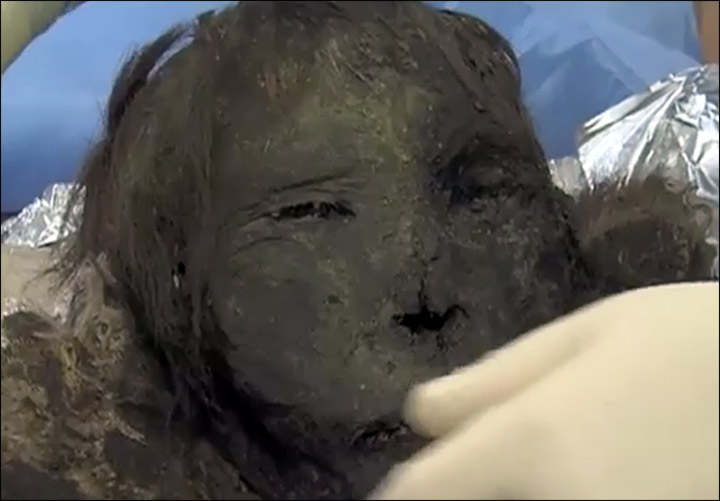A female mummy with a full head of hair and eyelashes was discovered in what was previously thought to be an all-male necropolis on the edge of the Arctic in Russia.
The well-preserved specimen, about 5 feet, 1 inch tall, is thought to be about 900 years old. Researchers believe she was about 35 when she died.
“This radically changes our concept about this graveyard,” said archaeologist Alexander Gusev from Russia’s Arctic Research Center. “Previously we thought that there were only adult men and children, but now we have a woman … It’s amazing.”

Covering her were furs and copper, which, along with permafrost, likely explain her mummification.
Heavy metals like lead, copper, and mercury are toxic to humans in high quantities, but can also slow the deterioration of soft tissues after death, according to “The Scientific Study of Mummies.”
The woman, dubbed the “Polar Princess,” was found with bronze temple rings near her head and a ritual copper plate covering her face, which could explain why her head was well preserved but the rest if her body was not.
Researchers examining the body say they can’t tell from the cadaver’s skeleton if it is a woman, but looking at the face, the gender seems obvious.

The burial site in the village of Zeleny Yar, about 18 miles south of the Arctic Circle, was discovered by archeologists in 1997 during a U.S.-Russia expedition.
So far, 47 graves have been uncovered at the site, nine of which contained mummies—three adults and six children. The adults were all male but the children were of both genders.
One mummy was a red-haired man who was also covered in fur and had a hatchet, a head buckle made of bronze, and chest-to-foot copper plating.
The bodies are thought to be from a hunting and fishing tribe that had links to Persia, some 3,700 miles to the southwest.
Artifacts uncovered at the site include Persian bronze bowls and bronze “antiques” that were made locally but from an earlier period.
Almost a dozen of the skulls and skeletons of the bodies uncovered were smashed, possibly from a ritual to protect the living from spells emanating from the deceased, Natalia Fyodorova of the Russian Academy of Sciences told The Siberian Times.
The feet of the deceased are all pointing towards the Gorny Poluy River, which researchers believe has religious significance, but what the rituals are is still unknown.
Based on the age of the remains, researchers believe that the site contains burials from two different periods—the 8th to 9th Century A.D., and the 13th Century A.D.
Along with the mummified woman, a mummified infant was uncovered in July, and both are undergoing analysis by a team of Russian and South Korean researchers at the Institute of Problems of Development of the North of the SB RAS in Tyumen.
The infant, believed to also be female, and the woman are not believed to be mother and child, but could be related.

